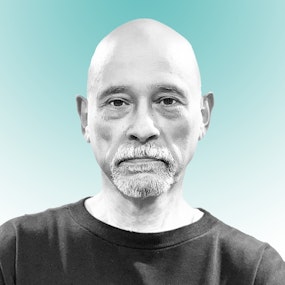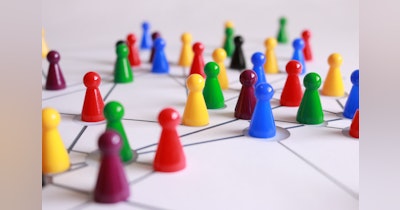Patient-centric healthcare is what we want. Money-making sickcare is what we have.
Tury Health
In a rHatchery.live podcast, Bindu Kalesan, Epidemiologist and founder of Tury Health, talked about her startup. She mentioned that they can bring the costs of clinical trials to one-tenth of what they are today, at $30M each. They can do that by making the trial patient-centric rather than focused on location or anything else.
Besides the dollar savings this results in trials that are more diverse, inclusive, and include people of color (PoC). The result is that today most of the drugs available are not been tested for PoC side effects.
Literacy
Bindu also said that we need health literacy. We need to learn to weigh different therapies and have a conversation with physicians. We need to ask good, informed questions of physicians, and not just take what we read on Dr Google literally. She is from Kerala where health literacy is a staple (the state handle the pandemic better, and had less number of deaths per capita, than every other Indian state).
That led Jose to mention that we also need “death literacy”. We have to bring death out of the closet. You are born, you live, and then you die. We need to normalize death and learn to talk about it without fear.
Sickcare
We also talked about the care we have today which Bindu called sickcare, which is what we really have today.
And it is not just Bindu: the issue of healthcare versus sickcare seems to be gaining momentum. Systems biology tries to see how everything works together … medicine [must be]: predictive, preventive, personalized, and participatory. ∇
Re-Start
As we were talking about all this, Bindu mentioned that we need is a patient-centric healthcare system, not the money-making sickcare system we have today. She warned that it will take a long time to do so.
As we continued talking, it became apparent to us that co-ownership could be part of making this happen. But rather than thinking about “policies” and such, it would be more effective to take a RADICAL approach. That has the potential to make it faster.
Speculation, Mostly
Imagine what a RADICAL healthcare system would look like,
- We form a RADICAL healthcare company.
- Everyone who wanted to be a patient, would also be an employee and co-owner.
- Physicians and other medical staff would also be co-owners, too.
- Everyone would have the ability to give RADs to other co-owners, based on their contributions.
- Everyone would have the ability to pledge their RADs to BANNERs. Pledging means that whatever the RADs yield (money) goes to the BANNER.
The above steps is what happens in a RADICAL company. Ownership is decentralized among co-owners based on their contributions, whereas traditional businesses based their ownership on the capital that each owner brings to the table.
BTW, each co-owner’s contribution is recognized by other co-owners, not a boss or any such.
RADs for Medical Services
The medical staff/co-owners would be easy because they perform the medical services needed. They would get RADs from patients/co-owners and from the medical staff/co-owners.
The medical services are what they create by working together.
But what about the patients/co-owners?
RADs for Literacy Power Ups
The patients/co-owners would deliver literacy. Healthcare literacy, death literacy, etc.
For example, StartSOLE is a pretty simple process,
- Somebody brings people together to ask questions and learn.
- This role is called a granny in the StartSOLE program. Of course, “granny” can be of any gender.
- She is not a teacher or any kind of expert, just somebody who is interested in the subject.
- In any case, she does not want to control the flow of information.
- She helps the team to stay focused on the questions.
- Once the question is laid out clearly enough, the group turns to the Web to research the question.
- Then they discuss what people found in their research.
- They learn from each other to understand and evaluate what they have found.
- If they want to hear from an expert, they can do so.
The key in all these is that people at more at ease and learn more from peers with adjacent skills, and more experienced peers than from an authority figure (e.g., the medical staff). The more experienced peer will use language and examples that are more meaningful to the learners’ level.
Bringing up the group’s level of literacy would be what patients/co-owners create by working together. They can then give RADs to each other.
Note that this will involve people who want to know about a particular procedure (e.g., knee surgery), or whatever other stuff people worry about and usually don’t ask because they have always been told that they are ignorant and don’t ask stupid questions.
RADs for Other Activities
| Losing Weight | This is not about body shaming, but weight is a known co-morbidity. In other words, it makes other illnesses worse. |
|---|---|
| Sharing | For example, going to schools and workplaces to talk about what you have learned or spreading the word about the healthcare company and talking about how it has helped them. |
RADs?
First, let’s explain what RADs are,
- Co-owners recognize each other’s contributions and give RADs to each other.
- It is more effective to have many co-owners recognize contributions. They can recognize contributions from may angles and it is more balanced and perceived as fairer by all co-owners.
- All RADs transactions are transparent, everyone can see who got what. If any co-owner notices something that looks “suspicious”, they can, and will, ask.
- Co-owners get one RAD per day, not to keep but to give to other co-owners.
- There is a RADs! mobile app that converts the recognized contributions to RADs.
- RADs are later used to distribute money or any other tangible goodie.
- RADs from your peer co-owners are tangible, not empty pats in the back from a boss.
RADs affect the membership fee,
- The medical staff/co-owners would get the most RADs which means that they will end up not paying a membership fee.
- Patient/co-owners would earn RADs from participating in literacy power-ups and other activities (see above).
- The most active patient/co-owner contributors will get a lot of RADs and their fees will go down accordingly.
- This may mean that inactive patients/co-owners will probably pay more for their membership.
Keep in mind that the ultimate goal is not capital growth, but the health of the community.



